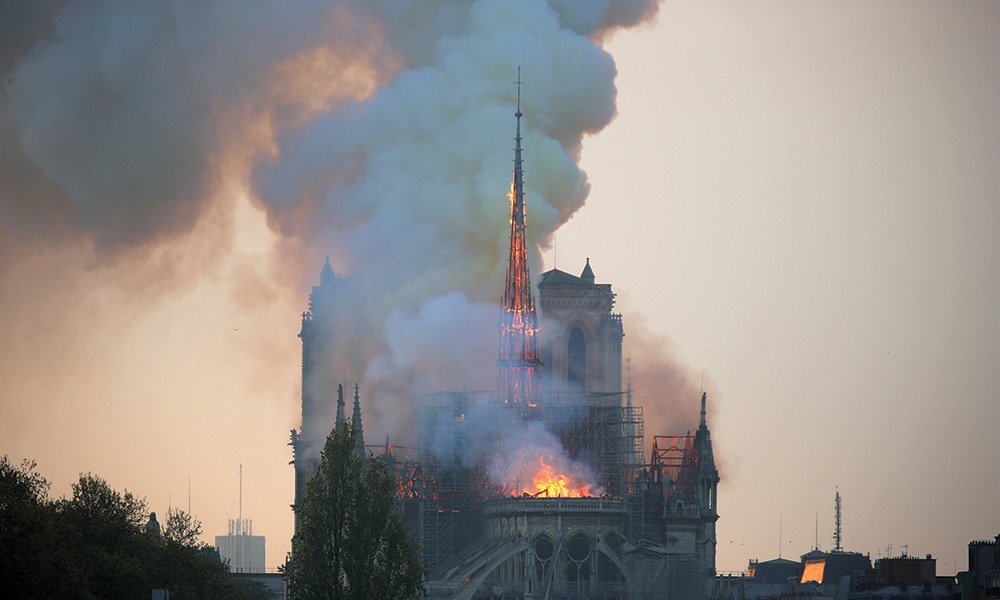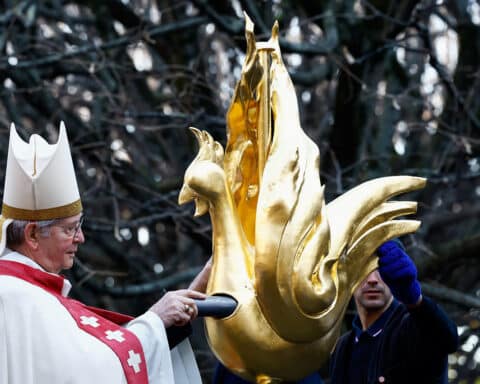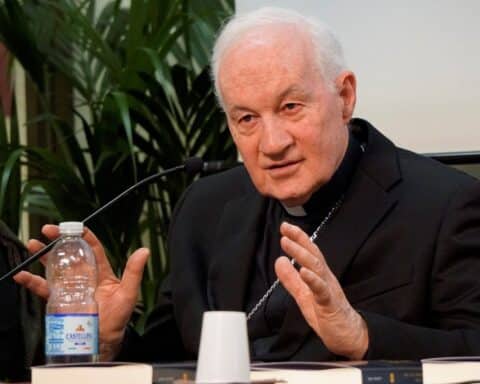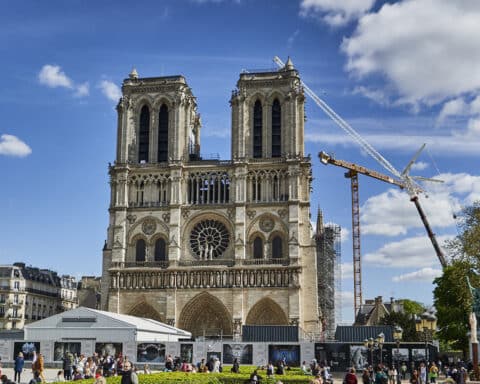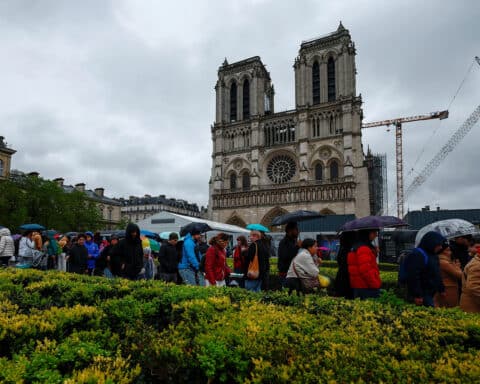
Notre Dame Cathedral is laden with more symbolism than sculptures. The Ile de la Cité, the site of the earliest settlement in Paris and its geographical center, was chosen in 1163 for the “House of God and the Abode of Men.” Maurice de Sully, archbishop of Paris, presided over the preparation of the 30-foot foundation — deep roots for a church meant to stand the test of time. Millions of tons of stone entombed the remains of the temple of Jupiter erected by the Romans during the age of Caesar, stamping out the embers of paganism.
Builders embarked on the ambitious plan, leveling 51 acres of forest to prepare the timber for the roof and quarrying the limestone to sheathe the church. The style was Romanesque, looking to the enduring buildings of ancient Rome, but during construction, technological breakthroughs allowed a new type of architecture to blossom — the Gothic — and Notre Dame was completed in this style.
Upon entering the church, solid cylindrical columns line the nave with a series of galleries that limit the light. This style celebrated the steadfastness of the church despite persecution, corruption, invasion and disasters. But progressing down the dimly lit nave, the church suddenly fans open to soaring vaults revealing an apse bathed in color: an architectural metaphor for the journey of faith, staying the path to reach the heavenly garden.
To achieve this effect, Notre Dame was among the first constructions to experiment with the use of flying buttresses, external supports that transferred the weight of the roof in a series of graceful arabesques to the ground. Seen from the back of the church, with the waters of the river Seine coursing by, the buttresses look like great oars propelling the ship of the church.
The façade, with its “twin tower,” has been the backdrop of weddings and funerals, riots and triumphs. Here, Joan of Arc was vindicated after her death; here Henry IV of Navarre professed the Catholic faith; here Napoleon crowned himself before Pope Pius VII; and here Georges Darboy was buried, the third archbishop of Paris to be killed during the 19th century. The portals were carved with scenes of new life with the stories of the Virgin who would bear the Savior, but they all illustrated the ultimate end of all people: the Last Judgment.
The devotion to Our Lady on the part of France, often called “the Eldest Daughter of the Church,” is evident throughout the building. The rose windows, glorious with stained glass, served as a bouquet of the Sorrowful, Joyful and Glorious mysteries. The statues and icons, of different ages and styles, recounted a common love of the Virgin, whether seen shrouded as a Byzantine icon or windswept as a Baroque sculpture. Then there were the Mays, a series of large paintings donated every May since 1630 in honor of the Virgin. Over 50 were seized during the French Revolution, but 13 remained in the church.
The Reformation damaged the church, the Revolution closed it, defacing and destroying the sacred images and replacing them with the new gods of reason and liberty. But they, too, fell, only to be replaced with the deadly phantasm of neglect. Thirty years passed without repair or restoration, leaving the church in such an alarming state that Victor Hugo wrote The Hunchback of Notre Dame to revive national interest in the structure. A few years later, Eugene Viollet-Le-Duc completely restored the church up to the 300-foot spire that the world saw crash to the ground during the fire, and cleared the square in front of it to create the breathtaking façade we saw crowned with flames.
Up until April 15, the Cathedral of Notre Dame was a historic monument for many, an Instagram moment for others, a movie backdrop for some and, for an ever-dwindling few, a place of worship and the hallowed custodian of the precious relic of the crown of thorns. But that night, as millions gathered around their screens and radios, and Parisians knelt or sang in the square, Notre Dame de Paris became the place where the world gathered in hope, love and prayer. It reclaimed its rightful purpose as an ecclesia — a church.
Elizabeth Lev writes from Rome.

